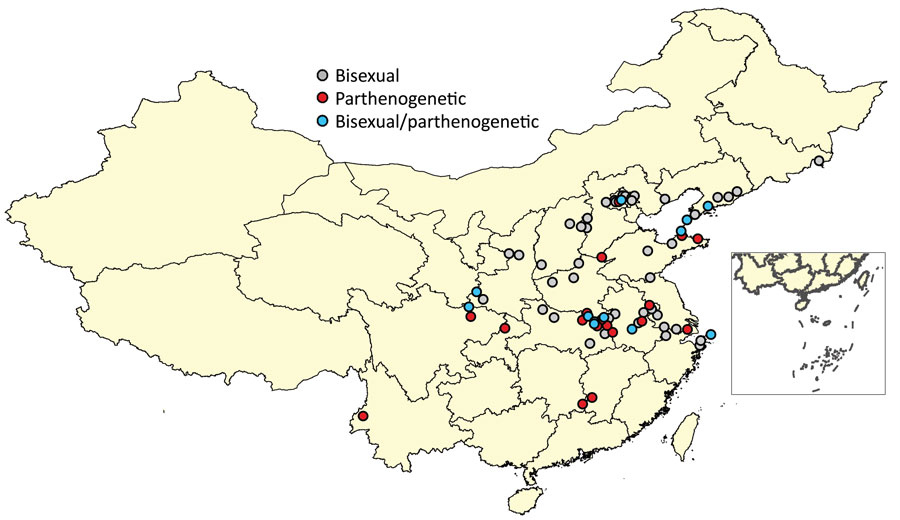Volume 28, Number 2—February 2022
Research
Rapid Spread of Severe Fever with Thrombocytopenia Syndrome Virus by Parthenogenetic Asian Longhorned Ticks
Figure 2

Figure 2. Geographic distribution of bisexual and parthenogenetic Asian longhorned ticks collected in China. Red dots indicate parthenogenetic ticks, gray dots indicate bisexual ticks, and blue dots indicate bisexual and parthenogenetic ticks.
1These authors contributed equally to this article.
Page created: September 27, 2021
Page updated: January 22, 2022
Page reviewed: January 22, 2022
The conclusions, findings, and opinions expressed by authors contributing to this journal do not necessarily reflect the official position of the U.S. Department of Health and Human Services, the Public Health Service, the Centers for Disease Control and Prevention, or the authors' affiliated institutions. Use of trade names is for identification only and does not imply endorsement by any of the groups named above.